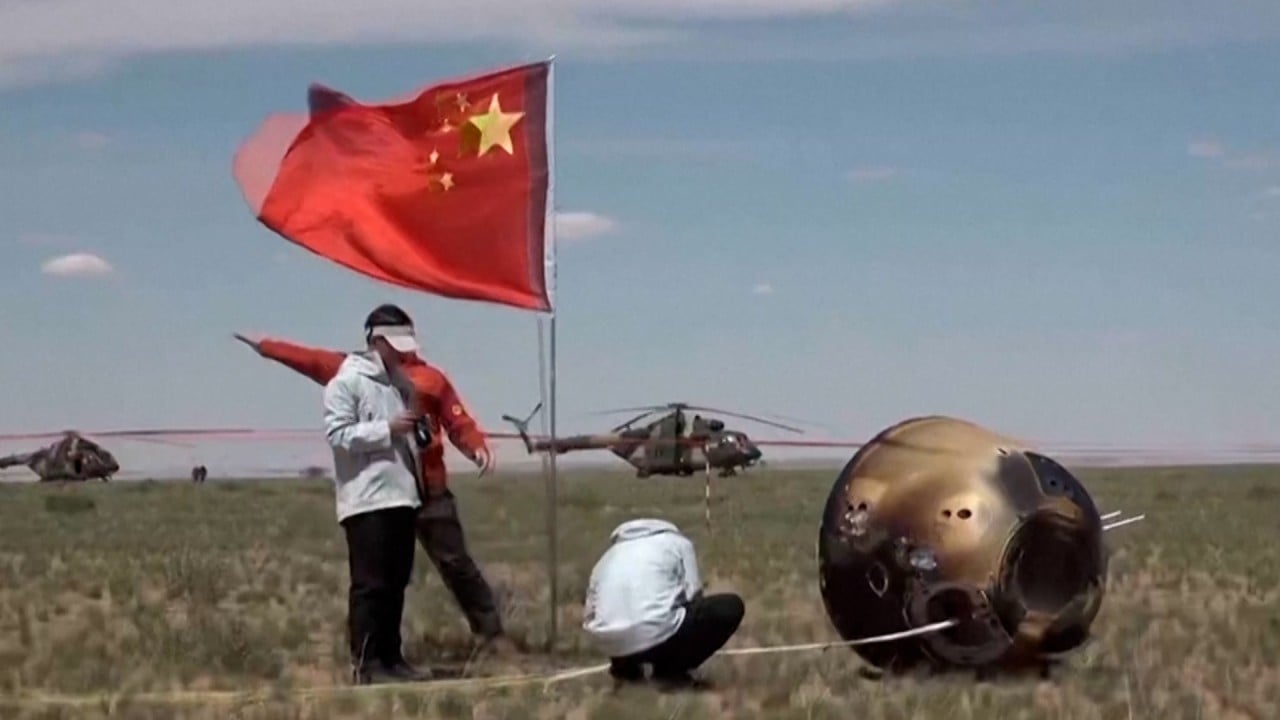The research was published as four open-access papers on Wednesday in Nature, one of the world’s oldest and most prestigious scientific journals with headquarters in London.
While these papers are available to all readers regardless of subscriber status, Chinese teams are reporting a wave of scientific findings from the country’s lunar programme that American government scientists may be locked out of because of a US decision to cancel subscriptions to Nature and other Springer Nature journals.
The new analysis of the returned far-side rocks suggests that part of the moon’s deep interior was stripped of important chemical ingredients more than 4 billion years ago – likely during a giant asteroid impact.
The collision was so powerful it not only carved out a 2,500km-wide (1,550-mile) crater on the moon’s far side – the largest of its kind in the solar system – but also changed the make-up of the moon’s mantle hundreds of kilometres below the surface, according to a team led by scientists at the Institute of Geology and Geophysics in Beijing.
Lava later erupted from this damaged mantle and cooled into volcanic rock that is depleted in elements such as titanium and thorium, as well as water. These samples are the most chemically depleted moon rocks ever studied – more so than any returned by the US, Soviet or earlier Chinese missions, which all came from the moon’s near side, the team reported in Nature on Wednesday.
Chang’e-6 is the first and only mission to return samples from the moon’s far side. It landed in the South Pole-Aitken basin in June 2024 and brought back 1.9kg (4.2lbs) of soil, mostly from a 2.8 billion-year-old volcanic eruption.



